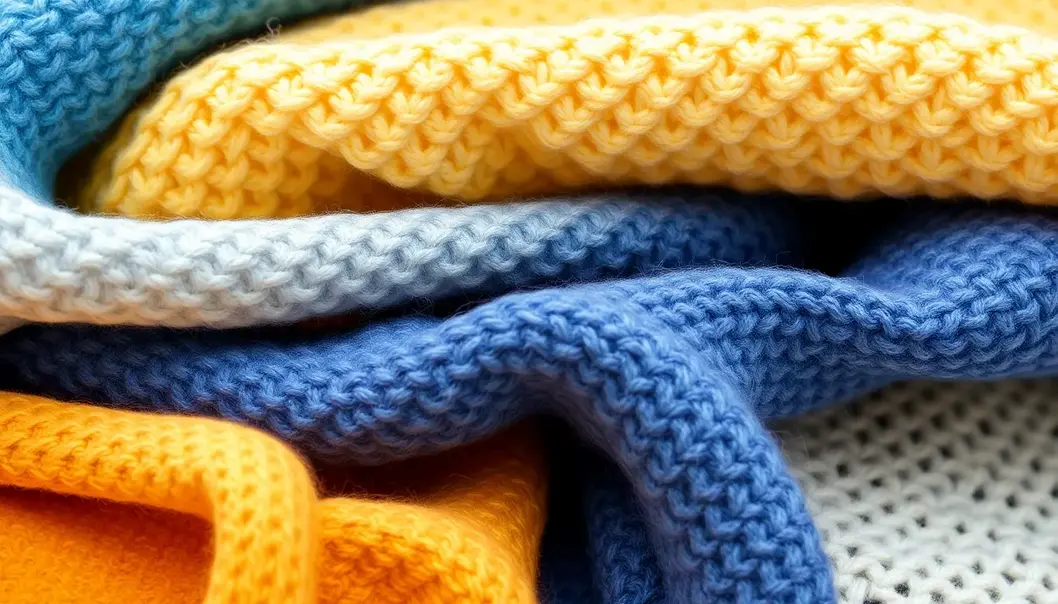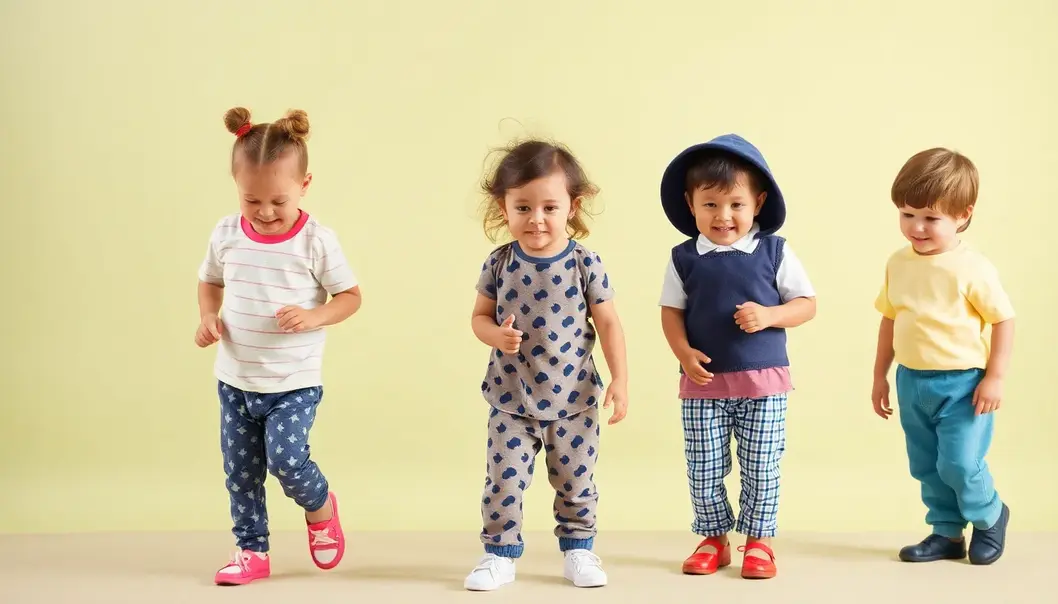Navigating the world of fabrics can be daunting for parents, especially when choosing the right blend for your child’s clothing. Various fabric blends offer unique benefits like durability, breathability, and comfort, ensuring your little ones stay comfortable and active. Understanding these different blends is essential, whether you’re looking for clothes that withstand playground antics or something soft for bedtime. In this guide, we’ll unravel the mysteries of fabric blends and provide practical insights on what to look for, helping you make informed decisions for your child’s wardrobe. Equipped with this understanding, you’ll be better prepared to select clothes that are not only stylish but also practical and comfortable.
Understanding the Basics of Fabric Blends

Navigating through the myriad of fabric blends can feel daunting at first, but understanding their basics is your first step toward making informed choices for your children’s clothes. Fabric blends combine different fibers to optimize specific characteristics—such as durability, comfort, and ease of care—offering practical benefits tailored for the rigors of children’s daily activities.
A prevalent fabric blend in children’s clothing is cotton-polyester. This blend marries the natural comfort of cotton with the durability and wrinkle resistance of polyester. Cotton offers breathability and softness, crucial for your child’s comfort, while polyester contributes to the fabric’s resilience against wear and tear. For example, a child’s playful day at the park often leaves clothes scruffy or stained. The robustness of a cotton-polyester blend ensures these clothes endure wash after wash without losing shape or appeal—paradoxically costing you less in the long run due to their lasting nature.
Bamboo-spandex is another increasingly popular blend among parents seeking clothing that’s both flexible and sustainable. Bamboo fiber is inherently soft, hypoallergenic, and moisture-wicking, making it ideal for sensitive skin. When combined with spandex, a small percentage enhances elasticity, providing freedom of movement crucial for active play. This blend is particularly valuable for children who enjoy sports or other physical activities, as it maintains comfort while allowing for extensive dynamic motion. Consider a day of gymnastics or dance lessons—bamboo-spandex garments will move seamlessly with your child, offering both functionality and comfort.
Evaluating these blends isn’t just about comfort and performance; it’s also practical to consider aspects like care requirements and cost. Cotton-polyester garments generally require low-maintenance care and resist shrinking more than pure cotton alternatives. They dry quickly, too, adding convenience to your busy schedule. Meanwhile, bamboo-spandex may demand a gentler wash cycle to maintain its fabric’s integrity, though it typically dries at a pace similar to polyester blends.
From a cost perspective, cotton-polyester blends often offer more budget-friendly options due to the lower cost of synthetic fibers. Bamboo-spandex garments might edge higher in price due to the premium nature of bamboo, coupled with its eco-friendly production processes. However, investing in such garments might prove reasonable for kids with sensitive skin or those needing movement-oriented clothing.
When selecting fabric blends, also consider how each option aligns with your values and needs. For instance, if sustainability and low environmental impact are priorities, bamboo-spandex might feel more aligned with those goals. Yet, if you prioritize practicality and cost-effectiveness, cotton-polyester remains a workhorse in children’s wardrobes.
By understanding these characteristics, you will be better equipped to select clothes that not only withstand the energetic lifestyle of your children but also simplify their daily care routine. Armed with this knowledge, you can confidently match fabric qualities to your child’s everyday requirements, ensuring that each garment serves its purpose effectively.
Choosing the Right Fabric for Your Child’s Needs

Choosing the right fabric for your child’s clothing can feel like navigating a maze, but understanding their unique needs makes the task more approachable. When it comes to active wear, breathability is paramount. Fabrics like cotton blends or polyester with moisture-wicking properties ensure that your child stays cool and dry during energetic playdates. These blends offer a light, airy feel that provides comfort without hindrance, promoting uninhibited movement during physical activities.
For sleepwear, the priority shifts to softness. Fabrics such as cotton-modal blends are exceptional for their silky texture, offering your child the comfort needed for a restful sleep. The inclusion of modal enhances the softness, making it more pliant against sensitive skin while maintaining temperature regulation throughout the night, which is crucial for uninterrupted sleep.
School uniforms demand durability. Blends such as cotton-polyester are renowned for their robustness. They withstand the rigors of daily wear and the frequent washes school uniforms often require. This blend resists wrinkles and shrinking, ensuring your child looks neat and presentable day after day.
To make informed decisions, understanding fabric labels is essential. Labels typically indicate the percentage of each fiber, care instructions, and special treatments or coatings. Being aware of these details helps select fabrics that align with specific wash routines and durability standards. For instance, recognizing a tag that recommends machine wash in cold water can be a determinant in choosing or discarding a particular item based on your laundry capabilities.
Comparing fabrics when shopping involves a few practical steps. Touch and feel the texture—look for a balance of quality softness and strength. Observing how the fabric behaves when manipulated can give clues to its longevity and resilience. For instance, gently scrunching the fabric and observing whether it rebounds quickly can provide insights into its wrinkle resistance.
A helpful checklist when shopping for fabric blends could include the following considerations for specific activities:
- Active Wear: Prioritize moisture-wicking properties and breathability.
- Sleepwear: Focus on softness and hypoallergenic materials.
- School Uniforms: Look for durability, easy-care fabrics, and wrinkle resistance.
- Seasonal Needs:
- Summer: Breathable, lighter fabrics to keep cool.
- Winter: Insulating blends like cotton-wool for warmth.
Understanding these distinctions helps tailor your choices to suit your child’s lifestyle and needs. While following these guidelines, it’s essential to observe how different seasons and activities influence your child’s comfort and modify your fabric selections accordingly. When in doubt, leveraging resources like online guides such as the World’s Most Beloved Breeds can offer additional insights into making quality clothing choices.
Final words
By understanding fabric blends and their unique benefits, parents can make informed decisions when choosing clothing for their children. From the playground to the classroom, selecting the right materials ensures each outfit provides comfort, durability, and style. Stay educated on fabric properties to best support your child’s evolving needs, ensuring they are comfortable and ready for any adventure life may bring.
Explore our wide range of fabric options and find the ideal blends for your child’s wardrobe today.
Learn more: https://example.com/fabric-options
About us
Our company offers an extensive range of high-quality, durable, and stylish children’s clothing in various fabric blends. Each piece is thoughtfully designed, ensuring comfort and durability for every occasion, from school wear to bedtime. We prioritize sustainable and hypoallergenic materials to make sure your child’s clothing is safe and lasts through every adventure.

